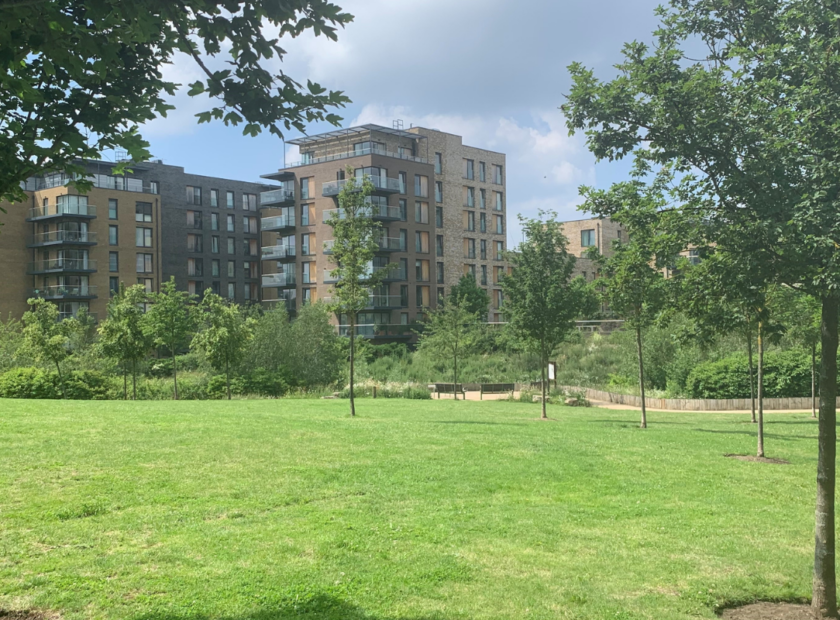In December 2020, the Place team at the UK Collaborative Centre for Housing Evidence (CaCHE) published Delivering design value: the housing design quality conundrum. Drawn from research conducted in all four nations of the UK, our report sought to unravel the ‘housing design quality conundrum’ to understand why the ‘value’ of design is foregrounded in planning policy in all four UK nations, yet the quality of new-build housing remains poor. In seeking to define ‘design value’ the report shares one of the key messages of the TCPA’s recent Healthy Homes Bill for England, that well-designed homes and neighbourhoods improve health and well-being and thus have significant social value.
The indivisible link between health, wellbeing and design quality is well-established. As the TCPA argue in their campaign, unhealthy homes not only negatively impact individual mental and physical health they also have wider societal effects that make society “less efficient, resilient and productive” (Healthy Homes Bill, 2020, p. 1). The general thrust of the legislative reforms championed by the TCPA in England are current ‘on the agenda’ in Wales and Scotland, as set out in the recent Welsh Placemaking Charter and the current position statement on the fourth National Planning Framework in Scotland, which includes the ambition to create well-designed ‘20 minute neighbourhoods’ that will not only help Scotland meet its ambitious climate change targets but also improve community health and wellbeing. At the end of January 2021 the government in Westminster also released a National Model Design Code for England, which similarly make a link between well-designed places and the health, wellbeing of communities, albeit to a limited extent.
While the advocacy work of the TCPA and the goals of policymakers in England, Scotland and Wales are encouraging, transforming the way we currently plan, design and deliver new housing in the UK to create more healthy and sustainable places will require radical change. Our research broadly agreed with the findings of the Place Alliance’s 2020 Housing Design Audit for England, that standardised, placeless and unsustainable housing development is more often than not granted planning permission. Poor housing design outcomes, our research found, are pervasive in areas with lower land values but are also widespread in more affluent places. We also found that housing design outcomes in the devolved nations are no better in Scotland, Wales and Northern Ireland despite evidence of more progressive design-aware planning policy making over the last decade.
So how do we address this endemic problem at the heart of planning, and capitalise on the current momentum for creating healthy, well designed places at the national level? In our report, we make a series of 12 recommendations ranging from adopting national design value standards to shaking up the way that land is allocated for new homes. Crucially, we must also look for ways to address the significant design skills deficit that exists in local authorities and support local planning officers, elected members and other council officials to make the bold decisions that are needed ensure that all new housing generates design value.
Many of the planning officers and elected members we spoke to as part of our research bemoaned the lack of design training available to them and also pointed to the pressure to award planning permission quickly and efficiently as a key barrier to creating well-designed places. To this end, a skills revolution is needed in local planning authorities. If design is to be harnessed to create the healthy and resilient homes of the future, then priority must be given to learning about the value of design and its powerful capacity to improve health and wellbeing. None of this can be achieved without ring-fenced funding for design skills and training, but it must also be met by a genuine culture shift at the local level. Design can no longer be swept aside by other concerns and local planning authorities must emerge as design champions if the national governments’ ambitions for healthy, well-designed places are to be realised.
The next stage of our Delivering Design Value project will be to address this challenge head on. We want to ensure that elected members and local authority planners across the UK are familiar with the evidence on what constitutes a well-designed home or neighbourhood and how design value can be optimised through the planning and development process. To get the ball rolling, CaCHE (with generous funding from the Scottish Government and the University of Glasgow) are commissioning a short animation on delivering design value, aimed at local planning authorities. Looking beyond that, we also want to collaborate with other organisations, including the TCPA, on ways to develop design skills and embed design-aware decision making throughout the often long and meandering planning and development process. Ultimately, our ambition is to ensure that the evidence on delivering design value flows down to those ultimately making the decisions that will shape the design of future homes and neighbourhoods across the UK.
Dr James White MRTPI, Senior Lecturer in Urban Design, University of Glasgow
Dr Chris Foye, Knowledge Exchange Officer, UK Collaborative Centre for Housing Evidence



